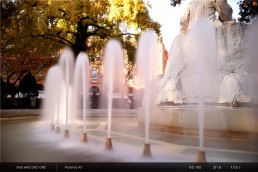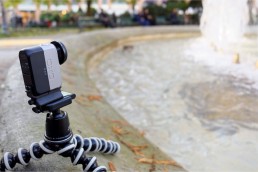Using a neutral density (ND) filter Accessories
An ND filter darkens the entire image and lets you achieve a variety of artistic effects.
Bright light during the day, especially in the summer, can produce overexposed (too light) images, even if the aperture on your DxO ONE is closed as much as possible (ƒ/11) and the sensitivity is set to its lowest value (100 ISO). In this case, a 0.9 ND (neutral density) filter is all you need to reduce the amount of light reaching the camera and create a perfectly-exposed photo.
(Photographer Florence AT)
You can use ND filters with all shooting modes available on your DxO ONE. This filter reduces ambient light so that you can take pictures in the middle of the day with a long exposure time. Depending on the type of filter you’re using, the exposure time can last up to twenty seconds or more. The ND filter prevents the image from being overexposed even when shooting in bright light and lets you achieve artistic effects with daylight—even with a wide aperture setting.
(Photographer Florence AT)
You can easily attach an ND filter to your camera with the DxO ONE Optical Adapter accessory. You can also add it to the DxO ONE Outdoor Shell. DxO offers two Heliopan models that won’t alter color or create a single dominant color in the final image. The 0.9 ND filter reduces light by three stops (eight times less light), while the ND2 model reduces it by 6.66 stops (100 times less light).
With respect to the artistic effects they create, the 0.9 ND filter lets you use an exposure time of a few seconds to create motion blur when photographing (for example) a waterfall in the forest. The ND2 filter, which has a stronger effect, can remove cars or pedestrians that briefly move into your frame when photographing a street in full daylight.
These filters are double-threaded so you can stack filters to increase the effect as needed.





 Download page
Download page